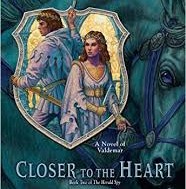4 Tips to Writing Expanding a Novel into a Series
Today’s guest post is by Vivek Hariharan.
Ever since the enormous success of the Harry Potter saga, there have been many writers who stopped writing single novels and focused on writing a series of novels. The successful ones that made waves in the world of fiction are Eragon with four books, The Hunger Games Trilogy, Divergent Trilogy, Percy Jackson and the Olympians, Twilight Saga, and the 50 Shades of Grey series.
Novels in a series are more likely to become blockbusters and chartbusters than individual books unless the author is already world renown.
Keeping this in mind, you might have the urge to expand the novel that you have written so carefully into a massive series. However, that is not an easy task. It would mean expanding the world, introducing new characters, building new timelines, creating back stories for the characters, and integrating all of this into each novel without losing the essence of the individual story by overcrowding.
So the most interesting question now is this: How do you create the series and at the same time integrate the individual stories and each character without losing the flavor of each individual novel itself? Here are four key aspects that you should keep in mind when you want to spit your story into a series.
The plot of each book is more important than the series itself.
When you look at individual books of a successful series, you will see that the story of each book of the series has a defined plot. The entire novel revolves around the plot of that book while at the same time contributing to the background of the series.
If you introduce many elements or characters that are not developed in the book, then the story will feel clunky and disconnected. Each character or timeline being introduced must connect to the plot of the novel. Additional characters that you wish to use later can be mentioned in passing or part of a stand-alone cliff-hanger that should not take too much significance away from the main plot.
Each book must stand alone without support from any other book.
If readers read the first book or the fifth book in the series, they should not feel completely lost. They should be able to understand and fall in love with the plot of the story even though they might have not read any of the previous books.
For example, if a reader starts with book 4 and is not able to understand the opening scene or where the plot is moving toward because the answers are only in Book 3, then it confuses the reader.
An interesting point to note here is that we have books across many series which diverge from this rule. For example, the third book of the Eragon series is left incomplete where there is a raging war. The second book of the “Immortals of Meluha” series is a cliff-hanger leaving the book incomplete. However, these books were the later books of an already highly successful series. Once a series becomes a massive commercial success, this rule can be bent.
Introduce backstories and timelines only if they support the main plot of the book.
Try to introduce backstories and timelines only when they are relevant to the main plot of the book. You can introduce a character in the first book when they are primarily featured in the fourth book, but do so with caution. The character or that piece of timeline should feel seamlessly integrated into the plot of the first book and should not stand out. If a character stands out in an earlier book, it could kill the suspense which the character was intended for.
Don’t cram all the characters into each book.
One of the many aspects of a series is that there can be a large number of primary and secondary characters and a host of supporting characters. Primary characters are characters which might have their own timeline or be an integral part of the main timeline. Secondary characters might be in the background that forms part of the main timeline but one that the story can live without. Supporting characters provide depth to the novel and also create a more robust universe.
You don’t need to mention all characters in all of the books. For example, there are over two hundred characters in the Harry Potter world. In each book, only five or six characters are primary characters, about fifteen characters are secondary, and about fifty are tertiary characters and just mentioned in passing to make the world more complete.
One interesting example of a hidden character is Sirius Black, the godfather of Harry Potter and the protagonist of the third novel, The Prisoner of Azkaban. He is mentioned in passing in the first chapter of the first book in a way that the reader would not take note. When the third book was released, the relationship helped create depth and display the creativity of the writer.
There is plenty of room for a flexible story structure, but these four tips should help you write a successful series readers will love.
 Vivek Hariharan is an MBA graduate in finance and loves to write. He owns and runs a multi-language blog that has dual-language short stories in eight languages. You can also visit Vivek on Facebook.
Vivek Hariharan is an MBA graduate in finance and loves to write. He owns and runs a multi-language blog that has dual-language short stories in eight languages. You can also visit Vivek on Facebook.
Featured Photo by Toa Heftiba on Unsplash












As hard as I try, I can only find FOUR tips!!
You are so right! The author revised the post and, voila, two went missing. I changed the title and noted in the post there are only four. Thank you!
I am writing the second one in the series – a murder mystery. The plot is different, though continued in a sense. The characters are the same. My problem is how much of the previous plot to reveal? For example, if someone reads the second book first, they could find out who the first book villain is! It’s a dilemma.
It is completely fine to reveal the villain of your first book in your second book since it is important to build continuity. say 90% of all readers go from book 1 and to book 2… It would create a disconnect between the books if book 2 has little mentions of book 1.
An example is how the second book of the harry potter series happily reveals that Prof Querrel is the villain of book 1. Without that, the series looks like 7 individual books 🙂 Hope this makes sense 🙂
Thanks for your reply, Vivek. Yes, what you said makes sense.